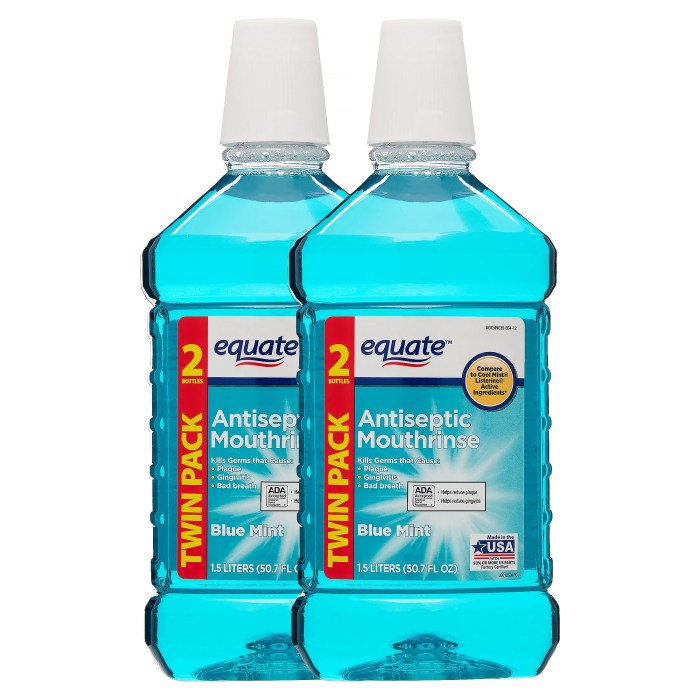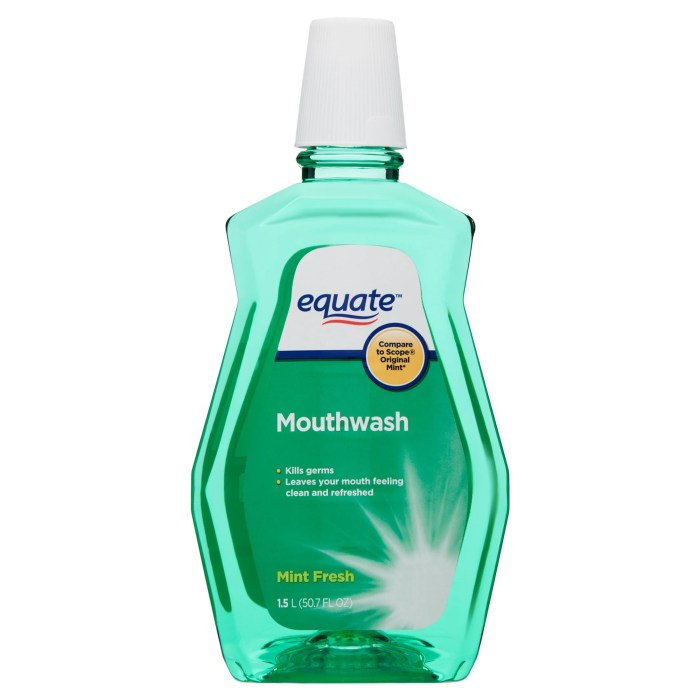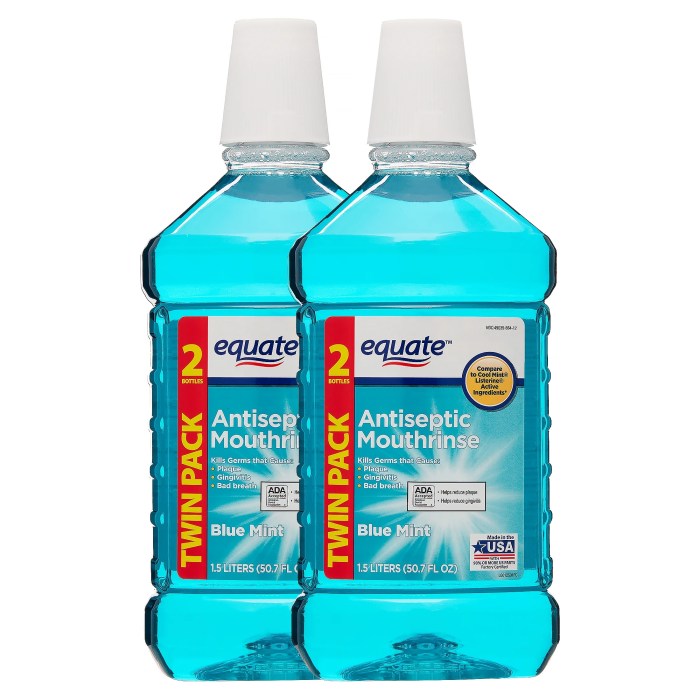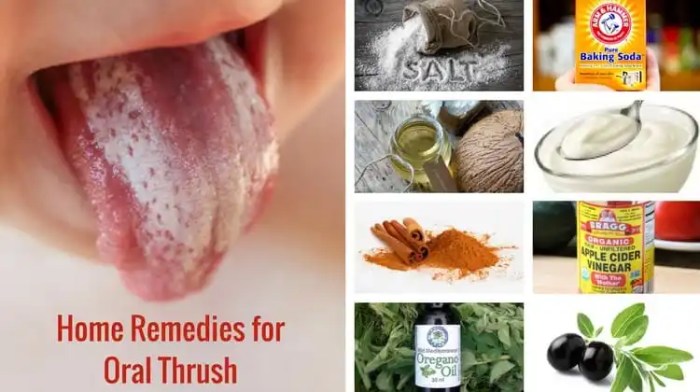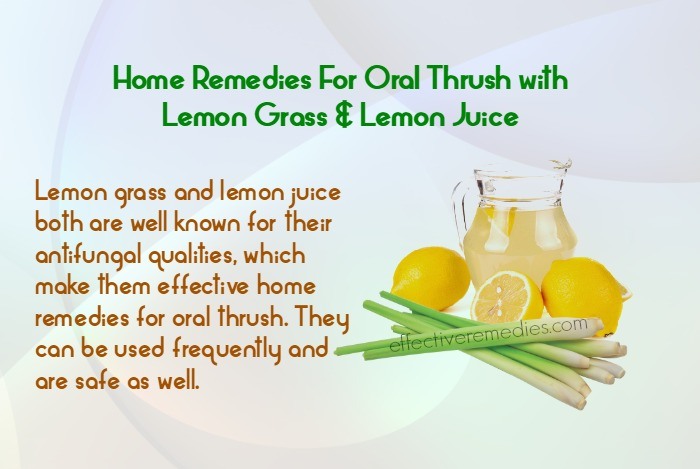Canker sore on tongue, those pesky little ulcers that pop up in the mouth, can be incredibly frustrating. This guide dives deep into understanding these painful sores, from their causes and symptoms to effective home remedies and when to seek professional help. We’ll explore everything you need to know about identifying, treating, and preventing canker sores.
From dietary triggers to stress factors, we’ll uncover the mysteries behind these common oral irritations. We’ll also discuss how to differentiate them from other mouth sores, like cold sores, and explore the potential complications that can arise.
Defining Canker Sores on the Tongue
Canker sores, also known as aphthous ulcers, are a common oral ailment that frequently affects the tongue. These small, painful sores typically appear as shallow, round or oval ulcers, disrupting daily activities due to their discomfort. Understanding their characteristics, causes, and potential triggers is crucial for effective management.Canker sores on the tongue typically manifest as painful, shallow ulcers ranging in size from a few millimeters to about a centimeter in diameter.
Their appearance often includes a yellowish-white or gray base surrounded by a red halo. These sores are usually located on the soft tissues of the tongue, including the underside, sides, and even the tip. They can also occur on the inside of the cheeks, lips, or the floor of the mouth. Their presence is often accompanied by a burning or stinging sensation, making eating and talking uncomfortable.
Appearance and Location
Canker sores on the tongue are characterized by a specific visual pattern. They typically appear as small, round or oval ulcers with a yellowish-white or gray base, surrounded by a red border. The location on the tongue can vary, impacting different areas of the soft tissue, including the underside, sides, and even the tip. This localized occurrence can be influenced by the delicate structures and potential for injury within these regions.
Common Causes
Several factors can contribute to the development of canker sores on the tongue. Dietary factors play a significant role, with certain foods potentially irritating the delicate oral tissues. Stress, both physical and emotional, has also been linked to a higher risk of developing these sores. Poor oral hygiene practices, such as inadequate brushing or flossing, may create an environment conducive to the development of canker sores.
Ugh, those pesky canker sores on my tongue are driving me crazy! They’re so painful, and I’m always on the lookout for natural remedies. Recent research, though, has highlighted a fascinating development in diagnosing Alzheimer’s—a blood test that promises to dramatically speed up the process. This alzheimers blood test speeds up diagnosis could revolutionize early detection and treatment, which is a huge leap forward.
But back to my canker sore, I’m still hoping a soothing tea will do the trick!
Potential Triggers
Certain triggers can increase the likelihood of canker sore formation. Specific foods, such as acidic fruits or spicy dishes, may exacerbate existing sores or contribute to their development. Trauma to the oral tissues, such as accidental bites or friction from ill-fitting dentures, can lead to sores. Underlying medical conditions, such as Crohn’s disease or celiac disease, have also been associated with an increased frequency of canker sores.
Comparison with Other Oral Sores
| Characteristic | Canker Sore | Cold Sore (Herpes Simplex) | Oral Thrush |
|---|---|---|---|
| Appearance | Small, shallow ulcer with a yellowish-white or gray base, surrounded by a red border | Fluid-filled blister that develops into a crusted sore | White or yellowish patches on the tongue and mouth |
| Location | Tongue, inside of cheeks, lips, or floor of mouth | Usually around the lips or on the inside of the mouth | Tongue, inside of cheeks, and roof of the mouth |
| Pain | Moderate to severe pain, often aggravated by eating or drinking | Moderate to severe pain, often accompanied by tingling or itching | Mild discomfort to moderate pain, often associated with burning sensation |
| Duration | Usually resolves within 7-14 days | Usually resolves within 7-10 days | Can last for several days to weeks if left untreated |
This table highlights key distinctions between canker sores and other common oral sores. Recognizing these differences can aid in proper diagnosis and treatment.
Symptoms and Identification
Spotting a canker sore on your tongue can be unsettling. Understanding the symptoms and how to distinguish them from other mouth sores is crucial for proper self-care and seeking timely medical attention if needed. Knowing the potential complications associated with these sores can help you take proactive steps to prevent further issues.Identifying canker sores accurately is important for appropriate management.
The key to successful treatment lies in early recognition and understanding of the different stages of development. This allows for prompt intervention and helps prevent potential complications.
Common Symptoms
Canker sores on the tongue, like those in other parts of the mouth, are typically characterized by a specific set of symptoms. These symptoms are often the first indicators of their presence and can help you determine the need for medical attention. Pain, varying from mild discomfort to intense throbbing, is a frequent symptom. The affected area might appear inflamed and tender, potentially making it difficult to eat or talk.
The pain often intensifies when the sore comes into contact with acidic or spicy foods.
Distinguishing Canker Sores from Other Mouth Sores
Accurate identification is essential for effective management. Distinguishing canker sores from other mouth sores, such as cold sores (fever blisters), is important. Cold sores, caused by the herpes simplex virus, typically appear as small, fluid-filled blisters on or around the lips or mouth. They often present with a tingling or burning sensation before the blisters develop. In contrast, canker sores are typically round or oval ulcers with a yellowish-white or grayish base and a red border.
They typically do not involve the skin around the mouth.
Potential Complications
While generally not serious, canker sores can occasionally lead to complications. A secondary infection can occur if the sore is not properly cared for, leading to further discomfort and potential complications. This is why good oral hygiene is critical when dealing with canker sores. If the sore becomes significantly larger or the pain worsens, it is important to consult a healthcare professional to rule out any underlying conditions or complications.
Stages of Canker Sore Development
Understanding the stages of canker sore development can help in managing the condition effectively. The following table Artikels the typical stages, from initial appearance to healing.
| Stage | Description | Image Description |
|---|---|---|
| Initial Stage | A small, slightly raised area appears on the tongue’s surface. It may be tender or slightly painful. The area around the sore might appear slightly reddened. | A small, round, slightly elevated spot on the tongue, with a pinkish-red halo. |
| Active Stage | The sore becomes an ulcer with a yellowish-white or grayish base. The red border becomes more defined. The pain and tenderness intensify. | A round or oval ulcer with a yellowish-white or grayish center, surrounded by a distinct red border. The ulcer appears slightly raised from the surrounding tissue. |
| Healing Stage | The sore begins to heal from the center outward. The pain subsides, and the sore gradually diminishes in size. The red border starts to fade, and the ulcer appears less prominent. | A smaller, less defined ulcer with a yellowish-white or grayish center, and a less distinct red border. The sore is healing and becoming flatter. |
Diagnosis and Treatment Options
Understanding canker sores on your tongue goes beyond simply identifying them. A crucial part of managing these small but often painful lesions is knowing when to seek professional help. This section will Artikel self-assessment methods, explore various treatment options, and explain the role of a doctor in the healing process.Accurate self-assessment can help you determine the severity and potential underlying causes of a canker sore.
It also guides you in deciding when professional medical intervention is necessary. Treatment options range from simple home remedies to more targeted medical approaches, and understanding these options is essential for effective management.
Self-Assessment for Canker Sores
A key aspect of managing canker sores is recognizing the signs that indicate a need for professional medical attention. Regular self-examination allows you to monitor the sore’s progression and identify any concerning changes. Look for signs of increasing pain, size, or unusual color changes. If the sore shows signs of bleeding, persistent pain, or unusual symptoms, it’s best to consult a doctor.
Treatment Options for Canker Sores
Several methods can provide relief from the discomfort of canker sores. These range from readily available home remedies to more specialized professional care. Understanding these options empowers you to choose the most suitable approach for your individual needs.
Home Remedies
Many people find relief from mild canker sores using readily available home remedies. These often involve applying topical treatments directly to the affected area. For example, rinsing the mouth with warm salt water can help soothe inflammation and promote healing. Alternatively, some find relief from over-the-counter topical pain relievers. However, it’s crucial to use these remedies cautiously, following the instructions on the product label.
Professional Medical Care, Canker sore on tongue
In cases where home remedies prove insufficient or the sore exhibits concerning symptoms, professional medical care is crucial. A doctor can accurately diagnose the cause of the sore and recommend the most effective treatment plan. They may prescribe specific medications or recommend additional therapies tailored to your individual needs.
Role of a Doctor in Diagnosis and Treatment
A doctor plays a vital role in the diagnosis and treatment of canker sores. Their expertise allows for a comprehensive evaluation of the sore, distinguishing it from other potential oral health issues. This evaluation often involves physical examination and sometimes additional tests to determine the underlying cause. The doctor can also provide personalized recommendations for treatment options, potentially involving medications like corticosteroids or other therapies.
Types of Medications and Treatments
Different medications and treatments are used depending on the severity and underlying cause of the canker sore. Some common treatments include topical corticosteroids, which can help reduce inflammation and pain. Other options might involve antimicrobial mouthwashes or medications targeting potential infections. The doctor will determine the most appropriate treatment based on the specific case.
Home Remedies and Prevention
Canker sores, those painful little ulcers on the tongue and inside the mouth, can be a real nuisance. While they usually heal on their own within a week or two, some relief can be found with simple home remedies. Knowing how to prevent them in the first place is key to avoiding the discomfort. This section explores effective home remedies and strategies for preventing these pesky sores.Understanding the triggers and implementing preventive measures can significantly reduce the frequency and severity of canker sores.
By understanding the factors that contribute to their development, you can take proactive steps to minimize their impact on your daily life.
Potential Home Remedies
Many people find relief from canker sores using simple home remedies. These methods focus on soothing the affected area and promoting healing. Topical applications and mouthwashes can provide immediate comfort.
- Saltwater Rinse: A simple saltwater rinse can help cleanse the affected area and reduce inflammation. Dissolve 1/2 teaspoon of salt in 8 ounces of warm water. Swish the solution gently in your mouth for 30 seconds, then spit it out. Repeat several times a day, as needed. This helps to reduce inflammation and promote healing.
- Milk of Magnesia: Applying a small amount of milk of magnesia directly to the sore can provide soothing relief. It forms a protective layer over the sore, preventing further irritation.
- Aloe Vera Gel: Aloe vera gel, known for its soothing properties, can be applied directly to the canker sore. The gel can help to reduce inflammation and promote healing.
- Coconut Oil: Some people find that applying coconut oil directly to the canker sore can help reduce pain and inflammation. The antibacterial properties of coconut oil may also help to prevent infection.
Preventive Measures
While some people are more prone to canker sores than others, there are steps you can take to reduce the likelihood of their occurrence. Dietary adjustments, stress management, and good oral hygiene play significant roles.
- Dietary Changes: Certain foods and drinks can irritate the delicate lining of the mouth, increasing the risk of canker sores. Identifying and avoiding these triggers can help prevent future outbreaks. A balanced diet, rich in fruits, vegetables, and whole grains, is essential for overall health, which can also help in preventing the recurrence of canker sores.
- Stress Management: Stress can weaken the immune system, making individuals more susceptible to various health issues, including canker sores. Implementing stress-reducing techniques, such as meditation, yoga, or deep breathing exercises, can help maintain a healthy immune system and reduce the risk of canker sores.
- Oral Hygiene: Maintaining good oral hygiene is crucial for preventing canker sores. Brushing and flossing regularly can help remove food particles and bacteria that can irritate the mouth and increase the risk of infection.
Trigger Foods and Drinks
Certain foods and drinks can irritate the mouth and increase the risk of canker sores. Identifying these triggers can help prevent future outbreaks.
| Food/Drink | Potential Impact |
|---|---|
| Citrus fruits (oranges, lemons) | High acidity can irritate the mouth |
| Spicy foods | Can cause irritation and inflammation |
| Extremely hot or cold foods/drinks | Can irritate the mouth lining |
| Salty foods | Can irritate the mouth |
| Hard or crunchy foods | Can injure the mouth lining |
Using Home Remedies
When using home remedies, always apply a small amount to the affected area. Avoid harsh scrubbing or rubbing. If the sore doesn’t improve or worsens after a few days, consult a doctor.
Proper application and monitoring are crucial when using home remedies. Do not use remedies for extended periods without consulting a healthcare professional.
Ugh, canker sores on my tongue are the worst! They’re incredibly painful, and I’ve tried everything to soothe them. Recently, I’ve been reading up on how some people use products like what is icy hot for pain relief, but I’m not sure if it’s safe for mouth sores. Maybe it could help numb the pain, but I’m still leaning towards a good old-fashioned cold compress.
Anyone have any other canker sore remedies?
Underlying Conditions and Related Issues

Canker sores, those painful little ulcers that pop up on the tongue and mouth, can sometimes be more than just a temporary nuisance. While often triggered by simple irritations or dietary factors, they can also be linked to more serious underlying conditions. Understanding these connections can help you get the right treatment and address potential health concerns.Understanding the potential connections between canker sores and other health issues is crucial for appropriate management and care.
Some underlying medical conditions can contribute to their development, while others may be signaled by persistent or recurring sores.
Ugh, canker sores on my tongue are the absolute worst! They’re so painful and persistent. I’ve been doing some research, and apparently, boosting your omega-3 intake might help benefits of omega 3 could potentially reduce inflammation in the body, which could, in turn, lessen the frequency and severity of those pesky sores. I’m going to try incorporating more fatty fish into my diet and see if it makes a difference.
Fingers crossed!
Potential Underlying Medical Conditions
Certain medical conditions can increase the susceptibility to canker sores. Autoimmune disorders, such as Crohn’s disease or lupus, can sometimes manifest as oral ulcers, including canker sores. Nutritional deficiencies, particularly in vitamin B12, iron, and folate, can also play a role. Additionally, some individuals with a compromised immune system might experience more frequent or severe canker sores.
It’s essential to consult a healthcare professional if you experience frequent or persistent canker sores, especially if accompanied by other symptoms.
Stress and Canker Sores
Stress is a significant factor that can influence the body’s immune response. Chronic stress can weaken the immune system, making individuals more prone to various infections and inflammations, including canker sores. The body’s response to stress can affect the production of certain chemicals, potentially triggering inflammation in the mouth. While a direct cause-and-effect relationship is not fully understood, the correlation between stress and canker sores is well-documented in many studies and personal accounts.
Dietary Factors and Canker Sores
Certain dietary habits can contribute to the development or recurrence of canker sores. Spicy foods, acidic foods, and hard or rough textures in food can directly irritate the delicate tissues in the mouth, leading to inflammation and sores. Specific examples of these irritating foods include citrus fruits, tomatoes, and highly seasoned dishes. Furthermore, certain food sensitivities or allergies may also play a role in triggering canker sores.
Foods and Drinks to Avoid
To minimize the risk of canker sore recurrence, it’s beneficial to identify and avoid certain foods and drinks that are known irritants. These can include:
- Citrus fruits: The acidity of citrus fruits can exacerbate inflammation and irritation in the mouth.
- Highly acidic foods and drinks: Foods like tomatoes, pickles, and carbonated beverages can irritate the delicate tissues of the mouth.
- Spicy foods: The heat from spices can cause irritation and inflammation.
- Hard or crunchy foods: These can directly damage the lining of the mouth, potentially triggering sores.
Avoiding these foods, while not a guaranteed cure, can significantly reduce the frequency and severity of canker sores for many individuals. This is a crucial preventative step in managing the condition effectively.
When to Seek Professional Help
While most canker sores are harmless and resolve on their own within a week or two, certain situations warrant immediate medical attention. Ignoring these warning signs could lead to complications or mask underlying health issues. Understanding when to seek professional help is crucial for proper management and faster healing.
Serious Symptoms Requiring Immediate Medical Consultation
A canker sore on the tongue, like any other oral lesion, can sometimes signal a more serious condition. Persistent or severe pain, rapid enlargement, or unusual characteristics should trigger immediate medical evaluation. This includes pain that significantly interferes with eating, drinking, or daily activities.
- Pain that is significantly worsening or not responding to over-the-counter pain relievers.
- Sores that are unusually large, deep, or have irregular borders.
- Sores that exhibit a change in color, like becoming noticeably redder, darker, or exhibiting unusual discoloration.
- Sores that are accompanied by fever, swollen lymph nodes in the neck, or a general feeling of unwellness.
- Sores that appear as part of a larger oral lesion, including a possible ulcer or infection.
- Sores that bleed easily or have a persistent, foul odor.
- Sores that are accompanied by other symptoms like difficulty swallowing, numbness, or tingling in the tongue or surrounding areas.
Diagnosis and Doctor’s Visit Expectations
Visiting a doctor for a canker sore involves a thorough examination and potential diagnostic tests. The process is designed to rule out any underlying conditions and ensure appropriate treatment.
- A visual examination of the affected area will be conducted by the doctor.
- The doctor will likely inquire about the onset, duration, and severity of the pain or discomfort.
- Questions about any recent changes in diet, medications, or stressors will be asked.
- A physical examination may include checking for swollen lymph nodes in the neck, jaw, or throat.
- In some cases, a biopsy may be necessary to determine the nature of the sore, especially if it shows unusual characteristics or doesn’t respond to typical treatments.
Steps in Obtaining a Diagnosis
The diagnostic process for canker sores typically follows a structured approach, ensuring accurate identification and treatment.
- Initial Assessment: The doctor will gather information about the sore’s appearance, location, and duration, as well as any associated symptoms. This initial step helps to narrow down potential causes.
- Physical Examination: A careful visual inspection of the affected area is performed, evaluating the sore’s size, shape, color, and any surrounding inflammation or lesions.
- Medical History Review: The doctor will ask about any relevant medical conditions, medications, recent stressors, or dietary changes that might contribute to the sore’s development.
- Further Testing (if needed): Depending on the assessment, additional tests like a biopsy may be recommended to confirm the diagnosis and rule out more serious conditions. This is particularly crucial if the sore exhibits unusual characteristics or doesn’t respond to typical treatments.
Visual Representation of Canker Sores
Canker sores, also known as aphthous ulcers, are common mouth sores that can appear anywhere in the mouth, including the tongue. Understanding their visual characteristics can aid in early identification and appropriate management. While they can be painful, they are usually harmless and typically resolve within a week or two without treatment.Visual identification of canker sores is crucial for distinguishing them from other oral lesions.
Their appearance often provides valuable clues to their nature and potential causes. This section delves into the visual characteristics of canker sores, highlighting their size, shape, and color, and contrasting them with other oral issues.
Appearance of Canker Sores on the Tongue
Canker sores on the tongue typically manifest as small, shallow, painful ulcers. They often appear as round or oval-shaped sores with a yellowish-white or grayish base. The surrounding tissue is usually inflamed and reddened. The size of these sores can vary significantly, ranging from a few millimeters to about 1 centimeter in diameter.
Differentiating Canker Sores from Other Oral Lesions
Differentiating canker sores from other oral lesions, such as cold sores, oral thrush, or even oral cancer, requires careful observation. Cold sores, for instance, typically appear as fluid-filled blisters that erupt and crust over, located around the lips or on the face. Oral thrush presents as white or yellowish patches, often with a slightly raised texture, and is frequently associated with a yeast infection.
Oral cancer can manifest as persistent sores, lumps, or thickening of the tissues in the mouth, frequently exhibiting irregular shapes and persistent bleeding. Early diagnosis is vital, and if uncertain, consulting a healthcare professional is always recommended.
Types of Canker Sores
Different types of canker sores exist, each with its own visual characteristics. While most are relatively similar in appearance, understanding the variations can help in managing and preventing them.
- Minor canker sores are the most common type, typically appearing as small, shallow ulcers with a yellowish-white base and a red halo. They are usually less than 1 centimeter in diameter and resolve within a week or two.
- Major canker sores, also known as aphthous ulcers, are larger and deeper than minor sores. They can measure up to 1 centimeter in diameter and may persist for several weeks or months. These sores often have a crater-like appearance with a yellowish-white base and a surrounding area of inflammation.
- Herpetiform canker sores are characterized by multiple small ulcers clustered together, sometimes numbering in the dozens. These ulcers are usually smaller than 1 millimeter and appear as tiny, pinpoint sores.
Visual Representation of Different Stages
Visual representation of the stages of a canker sore development is essential for understanding the progression and healing process. While detailed images are not included in this format, imagine a small, shallow, and painful ulcer with a yellowish-white base and a surrounding area of redness.
As the sore develops, the pain and inflammation can increase. Over time, the sore heals, the inflammation subsides, and the ulcer eventually disappears, leaving no lasting mark.
Closing Notes: Canker Sore On Tongue
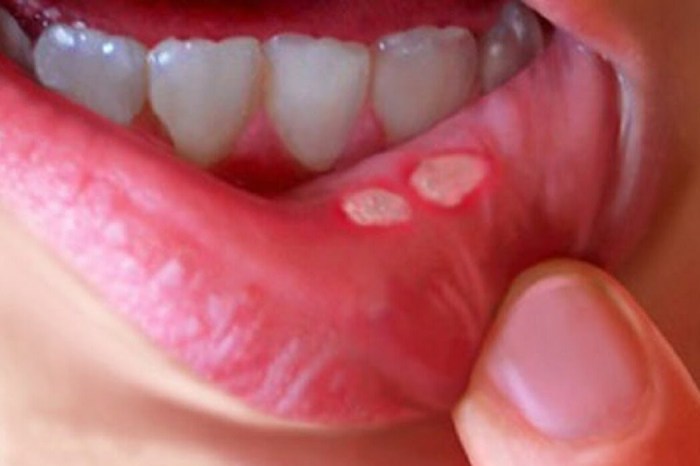
In conclusion, canker sores on the tongue, while often annoying, are usually harmless. By understanding their triggers, symptoms, and treatment options, you can effectively manage these minor mouth sores. This guide provides a comprehensive resource for navigating canker sores, offering both home remedies and insights into when professional medical attention is crucial. Remember to prioritize your oral health and consult with a healthcare provider if you have concerns.

